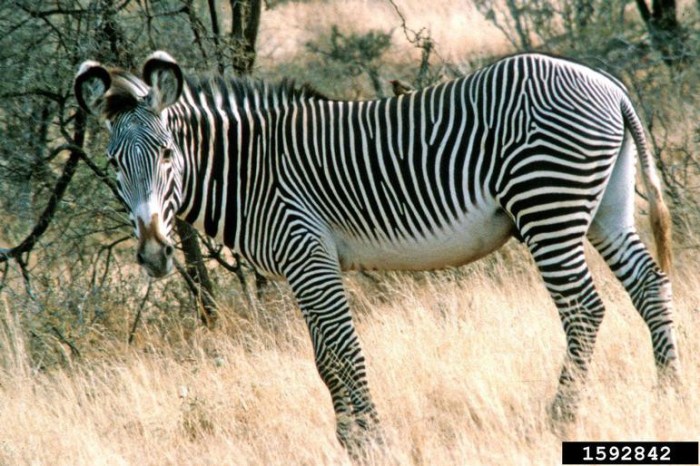Examples of Animals with False Coloring: Animals That Use False Coloring

Animals that use false coloring – False coloring in animals is a fascinating adaptation that enhances survival. It involves the use of coloration or patterns to deceive predators or prey, increasing the animal’s chances of survival and reproductive success. This deception can take many forms, from mimicry to camouflage, and is particularly prevalent in insects.
Discover the amazing world of animal camouflage! Many creatures, like the viceroy butterfly mimicking the poisonous monarch, use false coloring for survival. Want to learn more about the incredible flight of these and other animals? Check out our fun animals that fly coloring sheet ! Then, delve deeper into the fascinating strategies animals employ to blend in and avoid predators through deceptive coloration.
Insect False Coloring Strategies
Insects utilize a diverse array of false coloring strategies. Stick insects, for example, employ masterful camouflage, their bodies mimicking twigs and branches to blend seamlessly into their arboreal environment. This is a form of disruptive coloration, breaking up the insect’s Artikel and making it difficult for predators to detect. Butterflies and moths often utilize a different strategy: mimicry.
Many species have evolved to resemble toxic or unpalatable insects, thereby deterring predators from attacking them. This Batesian mimicry, where a harmless species mimics a harmful one, is a powerful survival mechanism. Other insects utilize a combination of camouflage and mimicry, further enhancing their protection.
Mimicry Strategies in Insects
The following table illustrates the mimicry strategies of three different insect species:
| Insect Species | Mimicry Type | Description |
|---|---|---|
| Viceroy Butterfly (Limenitis archippus) | Batesian Mimicry | Mimics the Monarch butterfly (Danaus plexippus), which is toxic to predators. The Viceroy’s similar coloration warns potential predators away, even though the Viceroy itself is not toxic. |
| Hawk Moth Larvae (various species) | Mullerian Mimicry | Many hawk moth larvae exhibit bright, warning colors, often in combination with eye spots. This is Mullerian mimicry, where multiple unpalatable species share similar warning signals, reinforcing the message to predators. |
| Walking Stick (Phasmatodea order) | Camouflage (Disruptive Coloration) | These insects remarkably resemble twigs or leaves, making them almost invisible to predators. Their body shape and coloration effectively break up their Artikel, making them extremely difficult to spot amongst their surroundings. |
Insects Using Disruptive Coloration, Animals that use false coloring
Many insects employ disruptive coloration to blend into their environment. This involves patterns and coloration that break up the insect’s Artikel, making it harder for predators to recognize its shape and form. Examples include leaf insects, whose bodies perfectly mimic leaves in shape, color, and even texture, and certain moths whose wing patterns resemble bark or lichen, allowing them to seamlessly merge with tree trunks or rocks.
The effectiveness of disruptive coloration relies on the insect’s ability to match its background accurately, often changing its coloration throughout its life cycle to match seasonal changes in its environment.
Examples of Animals with False Coloring: Animals That Use False Coloring

False coloring in animals, encompassing both camouflage and mimicry, is a remarkable adaptation developed through natural selection. This evolutionary strategy significantly enhances an animal’s chances of survival by either helping it evade predators or successfully ambush prey. The effectiveness of these strategies is evident in the diverse array of animals that employ them, including a wide range of amphibians and reptiles.
Amphibian and Reptile False Coloring Strategies
The effectiveness of camouflage and mimicry in amphibians and reptiles is particularly striking due to their often vulnerable life stages and reliance on ambush predation or escape from predators. Their coloration often directly reflects their environment and lifestyle. Many species exhibit a complex interplay of color, pattern, and behavior to achieve optimal concealment or deception.
- Leaf-tailed geckos (genus Uroplatus): These geckos are masters of camouflage, possessing flattened bodies and intricate coloration that perfectly mimics the bark and leaves of trees in their native Madagascar. Their coloration varies greatly depending on their specific habitat, making them almost invisible to predators and prey alike. The leaf-like tail extension further enhances this deception.
- Poison dart frogs (family Dendrobatidae): Many species within this family exhibit aposematic coloration, a form of warning coloration. Bright, vibrant colors, often combinations of red, yellow, and black, signal to potential predators their toxicity. This is a form of false coloring, not because it hides them, but because it warns of danger, thereby reducing predation. The frogs themselves are not trying to “look like” anything else, their coloration is a direct signal.
- Green tree snakes (Dendrelaphis species): These snakes’ bright green coloration provides excellent camouflage amongst the foliage of trees. This allows them to ambush unsuspecting prey such as frogs, lizards, and birds, while simultaneously protecting them from their own predators.
- Chameleons (family Chamaeleonidae): Famous for their color-changing abilities, chameleons utilize this adaptation for both camouflage and communication. They can blend seamlessly with their surroundings, making them difficult for predators to spot, and also change color to signal their mood or territorial status. This color change is not always a perfect mimicry of the background, but serves the function of concealment or communication.
- Hognose snakes (Heterodon species): When threatened, hognose snakes employ a unique form of defense involving false coloring. They flatten their heads and bodies, hiss loudly, and sometimes even feign death. Their coloration, often a blend of browns and tans that helps them blend with the ground, combined with this dramatic display, can effectively deter predators.
FAQ Insights
What is the difference between camouflage and mimicry?
Camouflage involves blending into the environment, while mimicry involves resembling another organism (often a poisonous or dangerous one) for protection.
Do all animals with false coloring use it for defense?
No, some animals use false coloring to ambush prey. For example, some predators use camouflage to sneak up on unsuspecting victims.
Can false coloring be learned or is it purely genetic?
It’s primarily genetic, though some animals may refine their camouflage techniques based on experience.
How does habitat loss affect animals that rely on false coloring?
Habitat loss destroys the environments these animals rely on for camouflage and can drastically reduce their survival rates.






